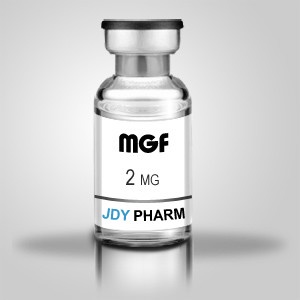MGF – Mechano Growth Factor Research Analysis
The MGF mechano growth factor, otherwise known as IGF-1Ec or IGF-1Eb, is one of the newest splice variants of IGF-1. Originally, though, it was called MGF because its RNA form gets expressed in the muscles and responds to overload and damage. Expressing these splice variants when the muscles are growing and healing is actually what produces new muscle tissue.
Alternative splicing usually happens in the c-terminal peptide of the MGF. This area also consists of an E domain, which can act on muscles independently from different molecule parts. Differentiation effects have also come about because of MGF.
Expression failure might lead to the skeleton giving up its functions, though, which is why MGF is known to affect different physiological roles. One of its main functions is to act as a neuroprotective to protect facial neurons after nerve damage has been experienced. Sarcopenia is one of the failures associated therewith.
After mechanical overload through activities, such as weight training, IGF-1 will be released and spliced as needed. Before, this action created more IGF-1Ec and made the satellite cells react to, in turn, make any other undamaged nuclei react and grow more muscle fibers and muscle tissue.
Once MGF shows up, the upregulation of new protein synthesis will start along with it. After the first splice, IGF-1Ea’s systemic release production will begin in the liver and upregulate the protein synthesis from there.
Generally speaking, the younger a research test subject is, the better it will respond to MGF. Older subjects usually experience slower responses and thus, end up with less of an ability to bring about new muscle tissue.
Cell fusion has already developed two hybridonoma-secreting monoclonal antibody clones of MGF, which can see any missing MGF peptides in IGF-1. Most of these peptides have 87-111 amino acids in them.
|




 Bestropin
Bestropin


